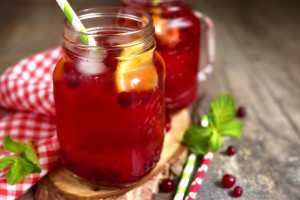What to Buy in Aisle 3

Grocery shopping is the focus of Nutrition Month this March and Dietitians of Canada is serving up practical tips to help you enjoy terrific tasting food that’s also good for you. And yes, they have an app for that called eaTipster.
While conventional wisdom has always recommended we shop the perimeter of the grocery store where the fresh produce and dairy items are stocked, we can’t avoid the inner aisles altogether. Read on for some handy tips to consider and what foods to look for when you find yourself in the centre aisles of your local grocer.
1. Flavour Boosters: It is possible to add flavour without adding more salt, sugar or fat.
Look for: Flavoured vinegars (rice, balsamic), pesto, salsa, no-salt seasoning blends, jarred garlic, jarred hot peppers, lemon/lime juices, cocoa, sesame seed oil, vanilla extract, no-salt broth and mustard. Build flavour by rubbing a roast with some grainy mustard and a pinch of dried rosemary before popping it into the oven.
2. Whole and Higher-Fibre Grains: Great for both your waistline and your heart.
Look for: Plain popcorn kernels, barley, quinoa, brown/wild rice, millet, bulgur, whole grain pasta, higher-fibre enriched pasta, oatmeal, cream of wheat, unsweetened whole grain cereals and whole wheat couscous. Cook couscous in orange juice for a nice hint of citrus.
3. Beans, Peas, Lentils: Low fat, high-fibre sources of protein.
Look for: Dried or convenient, no-added-salt canned varieties. Blend up a bean dip to serve with raw vegetables, spread on a wrap or thicken soups.
4. Canned/Jarred Vegetables: Often a source of vitamin C and fibre. Apart from any sodium they contain, they are just as nutritious as fresh.
Look for: No-salt varieties i.e. tomatoes, corn, pumpkin and beets. Try beets in wraps and salads or blended into hummus.
5. Canned/Jarred Fruit: Often a source of vitamin C and fibre.
Look for: No-added sugar options i.e. pears, peaches, applesauce, fruit cups, mandarin oranges and pineapple. Canned pineapple goes great on pizza and in coleslaw, smoothies, yogurt, fruit salad or in a stir fry.
6. Fruit/Vegetable Juice: Better than fruit drink but from a fibre stand point, it’s better to eat our fruit and vegetables than drink them.
Look for: Pomegranate juice, low-sodium and no-added sugar options. When kids want a fizzy drink, instead of pop, offer them half 100% juice, half club soda.
7. Nuts, Seeds and Nut Butters: Provide a good source of healthy fats.
Look for: Single-ingredient options that contain just the nuts or seeds. Try a new seed (chia, pumpkin, sesame, sunflower or flax seeds) in muffins, cereal, homemade granola, yogurt, salads or trail mix.
8. Fish: Provides an excellent source of protein.
Look for: Omega-3-rich fatty fish (salmon, trout or mackerel) and no- or low-sodium canned options. Enjoy canned salmon in wraps, quiche, fish cakes, dips or spread over crackers. The bones are an excellent source of calcium.
Dietitians can help you plan, shop, cook and enjoy tasty, good-for-you food that will make you feel terrific. Visit Dietitians of Canada to find a dietitian in your area.














